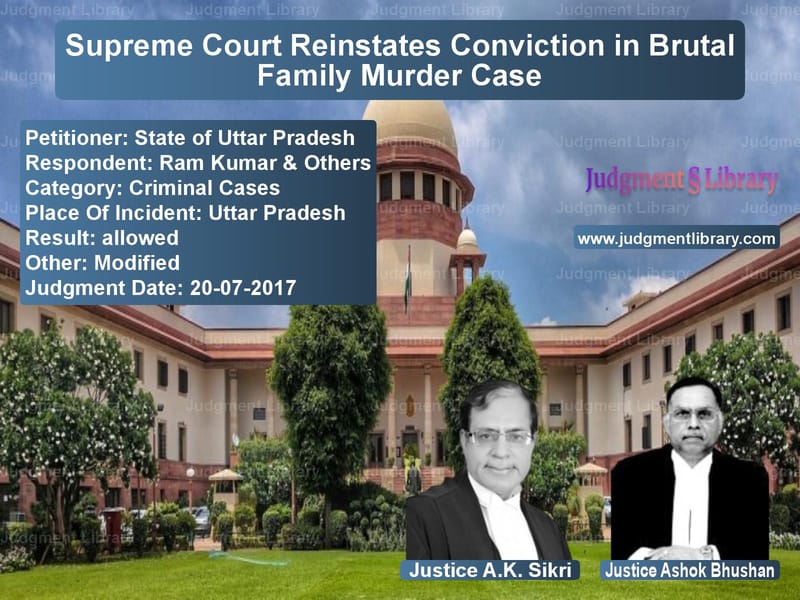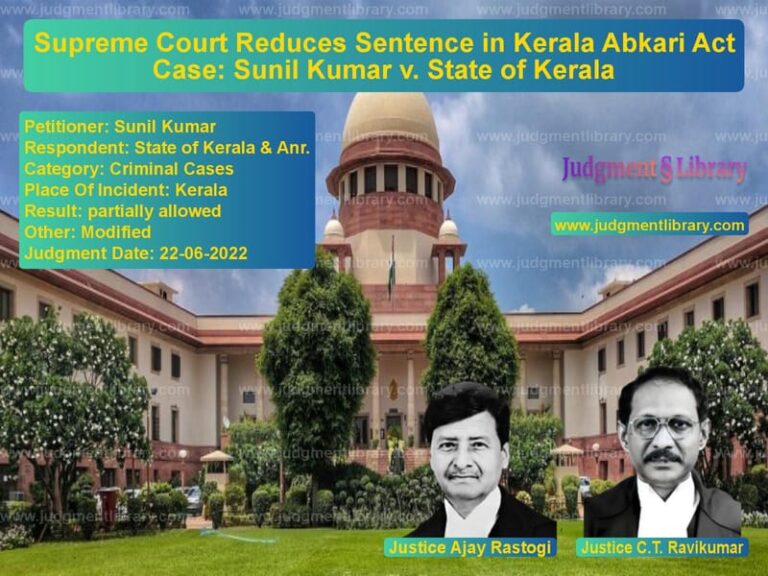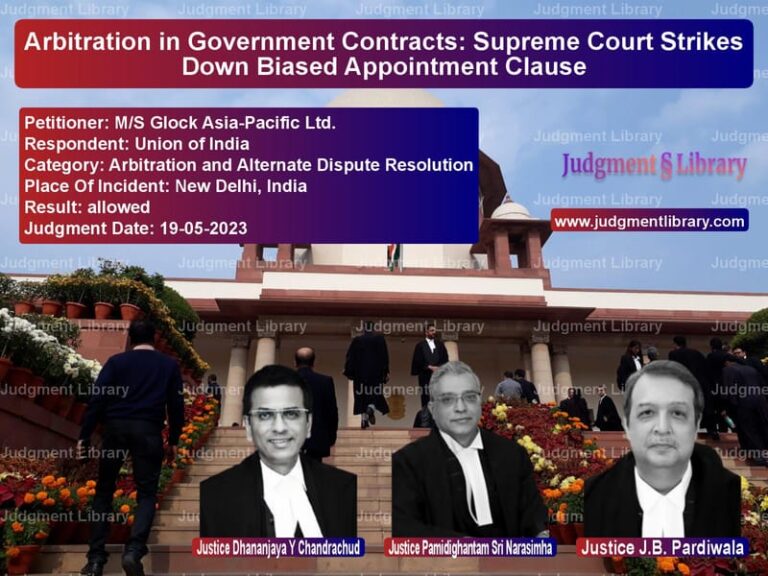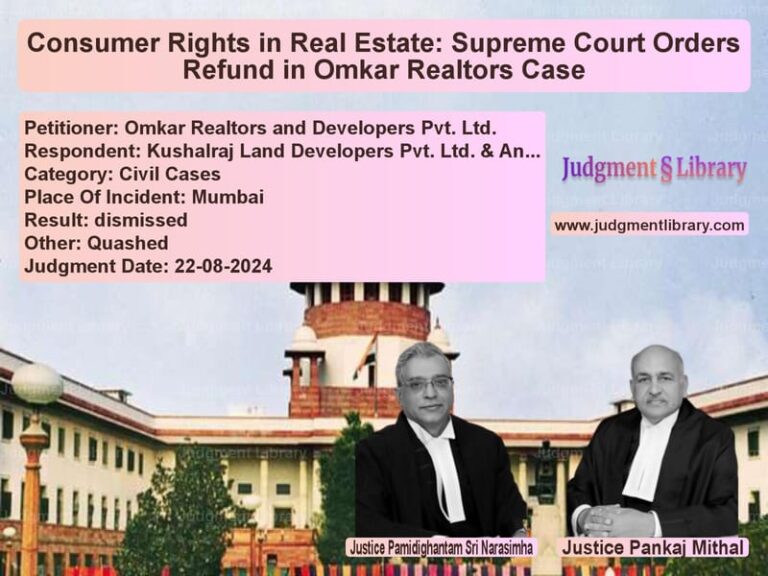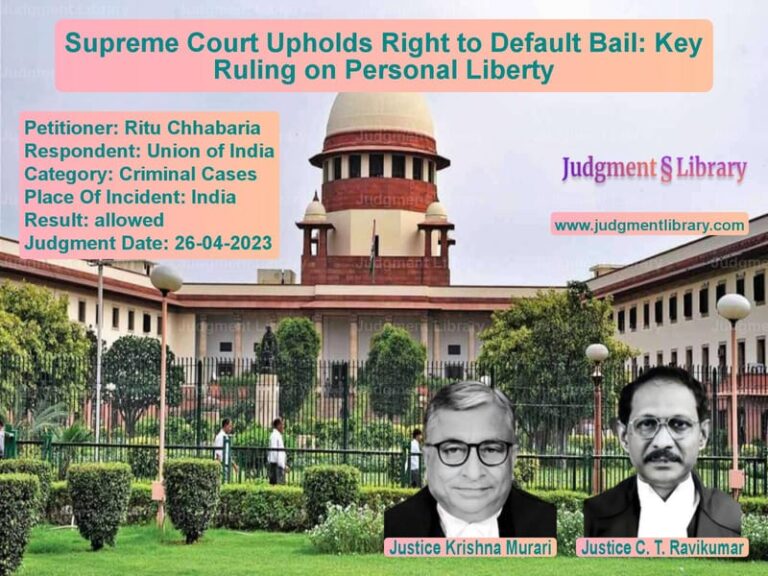Supreme Court Reinstates Conviction in Brutal Family Murder Case
The Supreme Court, in the case of State of U.P. vs. Ram Kumar & Others, delivered a crucial judgment reinstating the conviction of three accused involved in a gruesome family murder case. The Court overturned the High Court’s acquittal and sentenced the accused to life imprisonment, highlighting the importance of eyewitness testimony and the need for justice in heinous crimes.
Background of the Case
The case pertains to a violent family dispute that escalated into a brutal crime in 1995. The accused, armed with deadly weapons, attacked their stepbrother and his family, resulting in multiple fatalities. The victims included women and children, some of whom died due to gunshot wounds, while others perished in a fire set by the attackers.
The trial court convicted the accused and awarded them the death penalty, but the High Court later acquitted them, citing doubts about the reliability of eyewitness accounts and the timing of the FIR. The State of Uttar Pradesh challenged this acquittal before the Supreme Court.
Key Legal Issues Considered
- Whether the High Court was justified in acquitting the accused despite the trial court’s findings.
- Whether the testimony of eyewitnesses, including injured witnesses, was reliable.
- Whether the FIR was ante-dated and if procedural lapses affected the credibility of the prosecution’s case.
- Whether the accused should face capital punishment or life imprisonment.
Petitioner’s (State of U.P.) Arguments
The prosecution presented the following arguments:
- The trial court had correctly appreciated the evidence and found the accused guilty beyond reasonable doubt.
- Eyewitnesses, including injured survivors, provided consistent and credible testimonies about the attack.
- The High Court erred in dismissing the prosecution’s case based on minor contradictions.
- The acquittal ignored the severity of the crime, where multiple victims, including children, were killed in a planned attack.
Respondent’s (Accused’s) Arguments
The defense argued:
- The High Court correctly found discrepancies in the prosecution’s case, particularly regarding the timing of the FIR and identification of the accused.
- The trial court relied too heavily on the statements of family members, who may have had biases.
- The accused were falsely implicated due to a longstanding property dispute.
- There was insufficient light at the crime scene, making identification unreliable.
Supreme Court’s Analysis and Judgment
The Supreme Court, comprising Justices A.K. Sikri and Ashok Bhushan, critically examined the evidence and concluded that the High Court had erred in acquitting the accused.
1. Reliability of Eyewitness Testimony
The Court upheld the credibility of eyewitnesses, particularly those who were injured in the attack:
“Convincing evidence is required to discredit an injured witness. Their presence at the crime scene is beyond doubt.”
2. FIR and Procedural Issues
The Court rejected the High Court’s concerns about the FIR being ante-dated:
“The sequence of events, including the medical examination of injured witnesses shortly after the attack, confirms that the FIR was lodged promptly.”
3. Identification of the Accused
The Supreme Court found that the accused were well-known to the victims and were correctly identified despite the defense’s objections about lighting conditions.
4. Sentencing Decision
While reinstating the conviction, the Court commuted the death sentence to life imprisonment:
“Considering the passage of time and the age of the accused, life imprisonment is the appropriate punishment.”
Final Orders
- The Supreme Court set aside the High Court’s acquittal and reinstated the conviction of the accused.
- The death penalty was commuted to life imprisonment.
- The convicted individuals were ordered to be taken into custody immediately.
Legal Implications
1. Strengthening the Role of Eyewitness Testimony
The ruling reinforces the principle that the testimony of injured eyewitnesses holds significant weight in criminal trials.
2. Clarifying FIR Procedural Requirements
The judgment clarifies that minor inconsistencies in an FIR do not automatically discredit the prosecution’s case.
3. Reaffirming Judicial Responsibility
The Supreme Court’s intervention ensures that errors in acquittals do not lead to a miscarriage of justice.
Conclusion
The Supreme Court’s judgment in State of U.P. vs. Ram Kumar & Others is a landmark ruling that upholds justice for victims of heinous crimes. By reinstating the conviction and imposing life imprisonment, the Court has reinforced the importance of consistency in legal proceedings and the need for fair but firm justice.
Don’t miss out on the full details! Download the complete judgment in PDF format below and gain valuable insights instantly!
Download Judgment: State of Uttar Prade vs Ram Kumar & Others Supreme Court of India Judgment Dated 20-07-2017.pdf
Direct Downlaod Judgment: Direct downlaod this Judgment
See all petitions in Murder Cases
See all petitions in Bail and Anticipatory Bail
See all petitions in Custodial Deaths and Police Misconduct
See all petitions in Judgment by A.K. Sikri
See all petitions in Judgment by Ashok Bhushan
See all petitions in allowed
See all petitions in Modified
See all petitions in supreme court of India judgments July 2017
See all petitions in 2017 judgments
See all posts in Criminal Cases Category
See all allowed petitions in Criminal Cases Category
See all Dismissed petitions in Criminal Cases Category
See all partially allowed petitions in Criminal Cases Category

